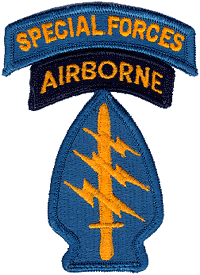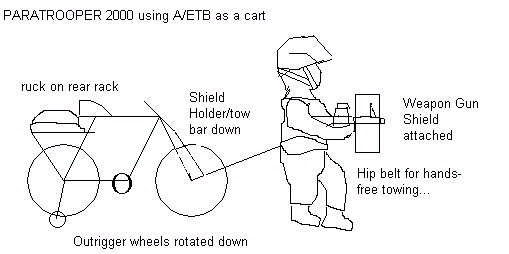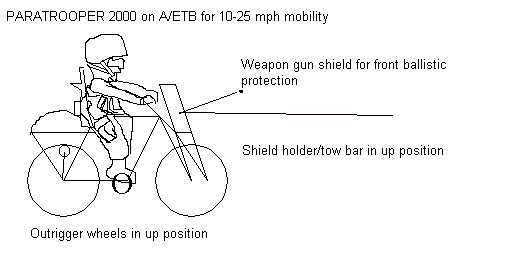
TODAY'S REALITIES OF BATTLE
Today's world moves by the speed of the AIR, not sea. Many see digitizing the foot Soldier as a cure-all for victory on the "information-age," sensor-swept battlefield. They forget that knowing everything may only tell you that you are blocked and need "mechanical advantage" to get through to destroy the enemy's center of cohesion. This happened at the NTC when an armored column could "see" the complete battlefield, but didn't have the physical means to defeat the OPFOR.
"Within this evolutionary climate, fiscal realities and the aging of existing systems have resulted in a significant gap in our forced/early entry capabilities. The deactivation of the 3rd Battalion, 73rd Armor, coupled with the termination of the Armored Gun System (AGS), has created a critical need for enhanced direct fire assault support and anti-armor capabilities for forced/early entry forces".
Official U.S. Army ACTD web site statement
"...the U.S. Army has fielded the world's heaviest and most thickly-armored tank and infantry fighting vehicle combination: the 70-ton M1 Abrams tank and the 30-ton M2 Bradley Fighting Vehicle. These vehicles are designed almost exclusively for dueling with other armored vehicles. The M1 mounts a massive 120mm high-velocity direct-fire cannon and the M2 Bradley carries a high-velocity 25mm auto cannon and direct-fire heavy antitank missiles.
The M1 tank's weight and limited main gun elevation reduce its effectiveness in the urban, mountainous and wet terrain typically found in potential theaters of operation such as Korea. Heavy armor often requires extensive engineer assistance to cross natural and manmade obstacles. For example, it took three days of intense bridging efforts to get M1 tanks across the Sava River in Bosnia. Finally, the heavy division, with limited infantry and helicopters, is seldom tasked for operations other than war because it has difficulty projecting presence beyond road networks or valleys."
Military Review, March-April 1997, Air-Mech Strike: Revolution in Maneuver Warfare by Major Charles A. Jarnot, U.S. Army
Missing key realities are the urbanization of the battlefield, which require shock action to blast through buildings, then fire fighting equipment on hand to prevent killing innocent people from fires set by our firepower and enhanced Soldier mobility to evade enemy fire and armor protection to withstand it (Somalia ).
Combat engineers should be tasked with urban combat fire fighting via G.I. portable pumps mounted on five-ton trucks, already in use on Navy ships. All Soldiers/Paratroopers should wear BDUs made of fire-resistant materials such as Nomex.
The primary Soldier threat is detection, followed by "missile" (bullets) threats. An effective camouflage for infrared viewers now exists, but cannot be discussed. Our forward slope defensive tactics are in need of overhaul. If our helmet digital interface tells us the way is blocked, we need high levels of Soldier mobility (4-7 mph on foot, 10-25 on folding extreme terrain bikes, ETB) to maneuver around resistance with the ability to interface with air, ground, sea craft that can deliver forces to an advantageous spot. The biggest mobility killer is the rucksack; once its on your back, you can no longer run at high speed, full-stride sprint. The British SAS can live for weeks behind enemy lines with what's on their LBE harnesses; COL Hackworth's "guerrilla battalion" did it in Vietnam, it must be used as a temporary LOGPACK, not a glued-to-the-back "security blanket."
Incorporate all the techniques/equipment described in AES articles (lightweight sleeping bags, poncho-tent, compressed MRES, etc.....) and you can live indefinitely in the field via a buttpack to carry small items like spare socks, LWSBs, compressed MREs. The Roman Legions marched with their sleeping gear (capes); Paratroopers should have theirs in their buttpack.
The ruck should carry ammunition, rations, water if it cannot be collected/purified and BDUs. Rucks should be collected and returned with new provisions by helicopter slingload/free drop or 4x4 vehicle like the mass airdroppable John Deere Para-Gator or tracked M113A3 Gavin Armored Fighting Vehicles.. Anyone would be able to grab any rucksack for immediate use.
The next mind set that needs to be broken is that it's okay for some Soldiers to be hit as we maneuver against enemy fire. Every man downed requires at least another combat life saver to aid/medevac-quickly stalling the attack to a standstill.
In the past, Soldiers carried shields to deflect missile threats. These could be linked together to form a human armored box or "phalanx." Today, the threat is the high-velocity bullet that can be stopped by ballistic protective materials such as lexan/kevlar, in a small form on the end of the rifle/carbine.
The shield needs to "ride along" as Soldiers fire their two-handed weapons/maneuver. It would be on the end of the weapon to facilitate protected aiming--a weapons gun shield (WGS). The WGS would hinge sideways so it can protect Soldiers as they low crawl with their weapons cradled under their arms and would detach to fit to the front handlebars of the ETB as a windscreen/shield or be strapped to the rucksack for parachute jumping as a lowering line load. The ruck could be thrown in front of the Soldier with the gun shield to act as expedient frontal cover so the Soldier can press on.
Get to point B from A in a bike in an hour, get off the bikes and into attack position. Walking at a turtle's pace for hours exposes the infantry force to all kinds of air/ground observation, artillery, mortar, small arms fires. Troops tired from long foot marches have lost battles and wars since the Battle of Hastings in 1066 A.D. What is so great about that?

Being able to move through terrain several 1,000 meter grid squares at a time is a form of protection called SPEED. When the LBI force moves it has security front, rear and flank to contact any enemies before they can reach the main body. When contact is expected, LBI teams move by bounding overwatch, one team aimed in on likely enemy ambush points as the other moves ahead--just like armored vehicles do. When it is certain the enemy is ahead, they dismount their A/ETBs and begin fire/maneuver on the enemy. This is more tactical then riding in back of a noisy, unarmed or armored truck thats gets flamed by a mere burst of AKM fire.

With a Weapons Gun Shield (WGS) on the end of their shoulder weapons, Paratroopers move forward from cover to cover behind the WGS in the prone, so even if the enemy returns fire, they can survive it to complete the mission----and regain fire superiority with their own weapons. Details of how the "bullet-sponge" paradigm can be defeated is enclosed in the future infantry squad web page link here;
www.reocities.com/Pentagon/5265/squad.htm
The WGS is attached at the front handlebars of the A/ETB during cycling for frontal protection-windscreen in event of enemy contact from the front. It appears that the powers-that-be are starting to listen...
Ref: Prior message on Shields used in MOUT.
Mr. Sparks,
"Thank you for your input regarding ballistic shields for Soldiers in a MOUT environment. You are correct that some sort of shield is needed. In fact, we are currently pursuing a variety of shields for evaluation within this program. Thank you again for your message."
Jonathan Root
MOUT ACTD Force
U.S. Army Soldier Systems Command Hotline
for Food, Clothing, Shelters and Airdrop Systems
DSN 256-5341
Comm: (508) 233-5341
e-mail: hotline@natick-amed02.army.mil
Want Pvt Murphy in your pocket?

 Return to Army Equipment Shop
Return to Army Equipment Shop